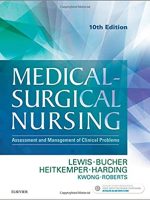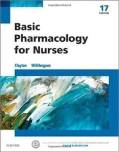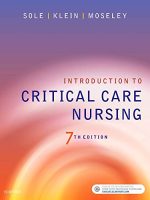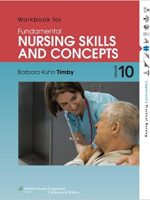Child Health Nursing is a vital aspect of nursing that focuses on the care and well-being of children. Understanding the intricacies of pediatric nursing requires in-depth knowledge and expertise, which is why resources like the “Child Health Nursing 3rd Edition By Jane W. Ball Test Bank” come in handy for nursing students and professionals. This test bank provides a comprehensive collection of questions and answers that can help individuals test their knowledge and understanding of child health nursing concepts.
The ISBN-10 of this edition is 0132840073, and the ISBN-13 is 978-0132840071, making it easy to identify and locate this specific edition. The test bank covers various chapters, each containing multiple-choice questions that challenge your knowledge and critical thinking skills in child health nursing.
From diagnosing conditions to advocating for children’s well-being, the test bank covers a wide range of scenarios that nurses may encounter in pediatric settings. By practicing with these questions, nursing students can enhance their understanding of pediatric nursing care, advanced practice roles, nursing education, and more.
FAQs
Q: What is included in the “Child Health Nursing 3rd Edition By Jane W. Ball Test Bank”?
A: The test bank includes multiple-choice questions related to pediatric nursing, covering topics such as nursing diagnoses, nursing interventions, advanced practice nursing roles, nurse education, and more.
Q: How can the test bank help nursing students?
A: The test bank provides a valuable resource for nursing students to test their knowledge and understanding of child health nursing concepts. By practicing with these questions, students can improve their critical thinking skills and better prepare for exams.
Q: Is the test bank aligned with the content of the textbook?
A: Yes, the test bank is designed to complement the content of the textbook “Child Health Nursing 3rd Edition By Jane W. Ball” and offers additional practice questions to reinforce learning.
In conclusion, the “Child Health Nursing 3rd Edition By Jane W. Ball Test Bank” serves as a valuable study resource for nursing students and professionals interested in expanding their knowledge of pediatric nursing. By engaging with the practice questions provided in the test bank, individuals can enhance their understanding of child health nursing concepts and improve their readiness to provide quality care to pediatric patients.Child mortality is a significant global health concern, with statistics showing that almost two-thirds of all infant deaths occur within the first 28 days after birth. To address this issue, healthcare professionals, particularly nurses, play a crucial role in providing education and interventions to prevent child injuries and mortality. Understanding the leading causes of child mortality and effective nursing interventions can help save lives and promote child well-being.
When discussing injury prevention with parents of toddlers, it is essential to highlight that the leading cause of death in children is unintentional injury. This includes various incidents such as motor vehicle crashes, drowning, fires, burns, firearms, and suffocation. Educating parents about these risks can help them implement safety measures to protect their children.
In decreasing mortality from unintentional injuries, one of the most effective nursing interventions is teaching parents about the proper use of vehicle restraint seats. Properly securing children in car seats can significantly reduce the risk of injuries and fatalities in motor vehicle crashes, which are a common cause of child mortality.
For infant mortality, particularly in the post-neonatal period, educating parents about the importance of positioning the baby on their back when sleeping can be a critical intervention. This practice has been shown to reduce the incidence of sudden infant death syndrome, which accounts for a significant percentage of infant deaths during the post-neonatal period.
Despite the availability of programs like the Children’s Health Insurance Program (CHIP), many eligible children remain uninsured. One common reason for this is that families are unaware that their child is eligible for coverage. Educating families about the program and simplifying the enrollment process can help more children access the healthcare coverage they need.
In conclusion, addressing child mortality requires a multi-faceted approach that involves raising awareness about the leading causes of child deaths and implementing effective nursing interventions. By empowering parents with knowledge and resources to prevent injuries and access healthcare, healthcare professionals can make a positive impact on reducing child mortality rates.
**FAQs**
1. **What are the leading causes of child mortality?**
The leading cause of death in children is unintentional injury, which includes incidents such as motor vehicle crashes, drowning, fires, burns, firearms, and suffocation.
2. **How can nurses help prevent child injuries and mortality?**
Nurses can help prevent child injuries and mortality by educating parents about safety measures, such as proper use of car seats and positioning babies on their backs when sleeping.
3. **Why do some eligible children not enroll in programs like CHIP for healthcare coverage?**
Some eligible children do not enroll in programs like CHIP because their families are unaware of their eligibility or perceive barriers to enrollment, such as income verification tests or monthly premiums.
By addressing these factors and providing education and support, nurses can play a vital role in reducing child mortality and promoting the health and well-being of children worldwide.










Be the first to review “Child Health Nursing 3rd Edition By Jane W. Ball-Test Bank”